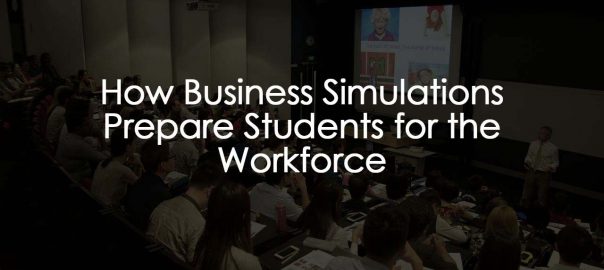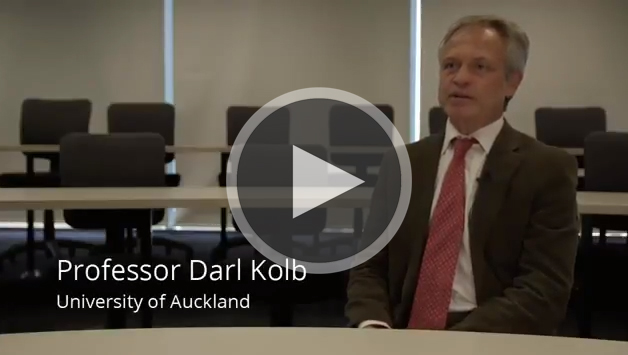Designing a course requires professionals, topic experts, and a deep understanding of students’ needs. The long and short of it – course design takes time. Therefore, we are creating a series of articles on how select Smartsims clients employ business simulations to engage their students.
This article follows Professor Darl Kolb of the University of Auckland. Having utilized MikesBikes Advanced in both his undergraduate and post-graduate courses, Professor Kolb’s students often exclaim this is the highlight of their degree.
Professor Kolb truly embraces the concept of experiential learning by utilizing course activities which reflect real-world situations managers of a company may experience. Through role-play students adopt roles within a ‘management team’. Instructors will take up the role of ‘shareholders’ or ‘board of directors’ who the students are responsible to. Deeply ingrained within the course content, the simulation is entirely relevant to the student’s and their futures. This relevance inherent within the simulation is key to keeping the students engaged. Professor Kolb finds this metaphore also provides students a sense of purpose and develops their skills for real-life business situations.
How is the simulation structured in the course?
“We have put it right at the centre of the design so it begins early on and runs on throughout the course so there is no seperation, it is intertwined … Students are getting used to the simulation just as they are getting used to the course.”
– Professor Darl Kolb
Generally MikesBikes Advanced features two key phases; Single-Player and Multi-Player. The Single-Player practice round has students competing against a computer opponent where they can control moving back and forth between decision periods (which we term “rollovers”). This usually occurs over a two to three week period. Students then move onto the Multi-Player competition where student teams will be competing against each other for highest Shareholder Value.
Professor Kolb’s course is structured according to the following key events:
- Single-Player practice phase
- Resume Activity
- Multi-Player competition phase
- Reflections
- Board Meetings
- Group presentations
- Final Shareholder Value
Single-Player Phase
“Students play the Single-Player to get orientated [with the simulation] just as if they were getting work experience to get this executive role we are going to give them.”
– Professor Darl Kolb
Professor Kolb introduces the course and the simulation together, ingraining into students that theory goes hand-in-hand with real-life business situations. Providing students with access to the Single-Player allows students to experience the simulation before they begin their simulation associated assignments.
Professor Kolb introduces the simulation to students in the first class and covers how the course will run. Outside of class time students will use the Single-Player for the first week aiming to gain the highest Shareholder Value they possibly can within a set number of rollovers (six to eight). Student’s best result in the Single-Player is included with their resume.
Resume Activity
Each student must submit a brief resume which includes past qualifications and/or experience which may be relevant to a position in the Management Team of their MikesBikes company, as well as their best Single-Player result. Professor Kolb then uses this information to assign students into teams of five, with an objective of splitting up those who performed well in the simulation and/or who bring previous business experience/qualifications. As part of this, Professor Kolb also assigns each student the role of either: CEO, Marketing Manager, Operations Manager, Finance Manager or Innovation Manager for their team (or ‘firm’). This application process helps students to develop the skills required to construct a resume and apply for a specific role they desire, often students will apply to particular roles they envisage for themselves after having completed their course.
Multi-Player Phase
“When their company begins performing we give them three practice rounds so they get to see the full MikeBikes-Advanced experience but they also get to restart and have another go in a different market. We have this stage to help students to come to grips with the complexity and the depth of the simulation.”
– Professor Darl Kolb
For the duration of the course, Professor Darl Kolb will continue with tying the simulation into the content he teaches. As a live case study, MikesBikes-Advanced provides him with a lot of opportunities to address specific events in the simulation by applying theory he chooses to present in class. With the simulation being applicable to each and every student, students find this content engaging and relevant.
Multi-Player Practice Round
The Multi-Player begins with four practice rollovers which occur weekly. This gives students an opportunity to familiarize themselves with their role and the team’s dynamics. It also enables students to, this course design starts students with a few practice rounds of the simulation. Letting students test strategies, make mistakes and learn from these. Students are bound to make mistakes and that is the nature of learning. This lets students make mistakes without affecting their grades later on. After the practice rollovers have been completed, the simulation then resets ready for students to begin with the real competition.
Multi-Player Competitive Round
The simulation is then reset ready for students to begin the real competition. Further rollovers are processed weekly. Over this phase Professor Kolb uses the activities below to facilitate real-world learning outcomes.
Reflections
At certain points throughout the course Professor Kolb assigns reflective exercises for students to complete. The most intense exercise for the individual students are the reflective essays; they require a combination of theory, personal experiences, introspection, and self-evaluation. Students are then graded upon their ability to describe their situations, their insight, and their ability to combine this with theory.
Board Meetings
Mid-simulation students engage in mock board meetings, where the Management Team (students in each group) must present to their board of directors (two or three faculty members). Students summarize their strategy, goals, and performance. Board members challenge students on the reasoning behind their decisions and remind them of their responsibilities to shareholders in future decision periods. This is potentially an activity which students can be graded on.
Group Presentations
After the final rollover each Management Team presents their simulation journey to the class. This is an opportunity to reflect on what went well, what mistakes were made, what they would they have done differently and what their learning outcomes have been.
Final Shareholder Value
Teams are ranked at the end of the simulation based on their Shareholder value. This is Smartsims’ recommended key performance indicator.
How does Professor Kolb grade the simulation?
Professor Kolb’s course content focuses on managing people and organizations. As such, although students are graded on final shareholder value, the majority of their course grade is assigned to reflections, board meetings and group presentations as mentioned above.
Is this the only way to design a course with MikesBikes Advanced?
Far from it! This is only one article in a series which explains various different ways other instructors are including the simulation within their business courses. There are multiple ways on how to incorporate a simulation beyond this too! The options are limitless.
Want to get started incorporating the simulation into your course design? Want to learn more? The Smartsims Team have years of experience and are here to help. Click here to talk to them about your course and how you would like to implement MikesBikes.
By Brook McFarlane










